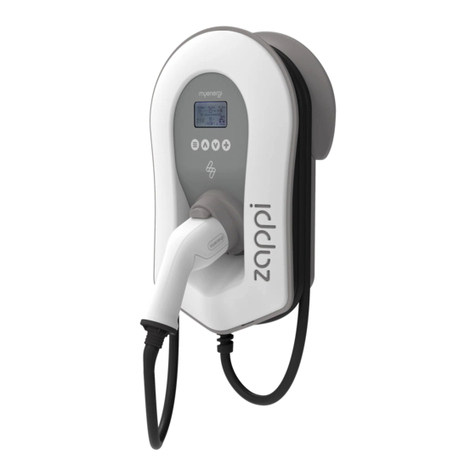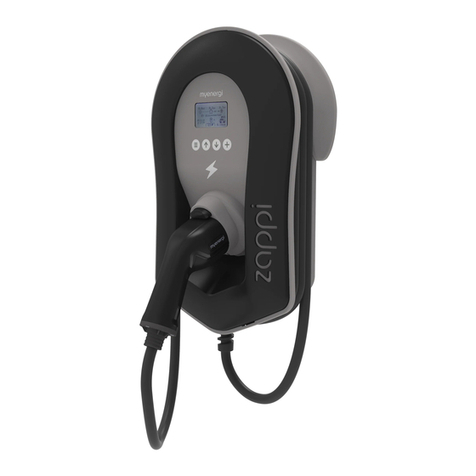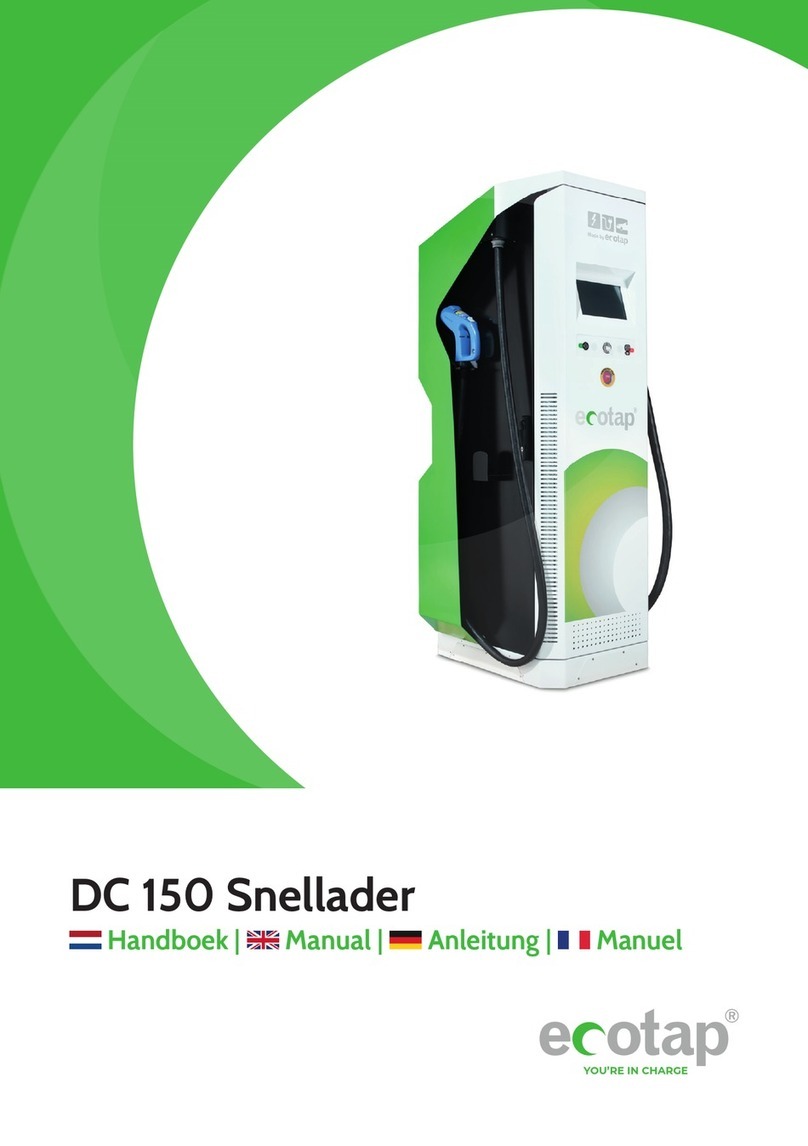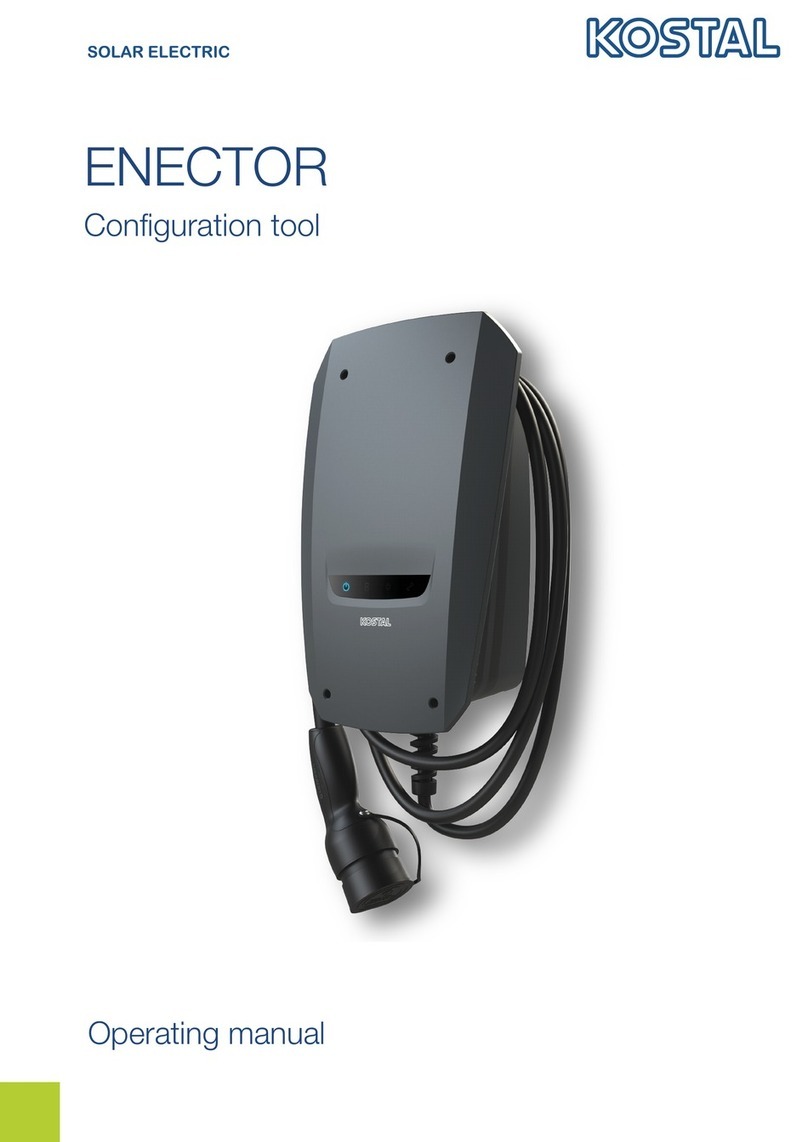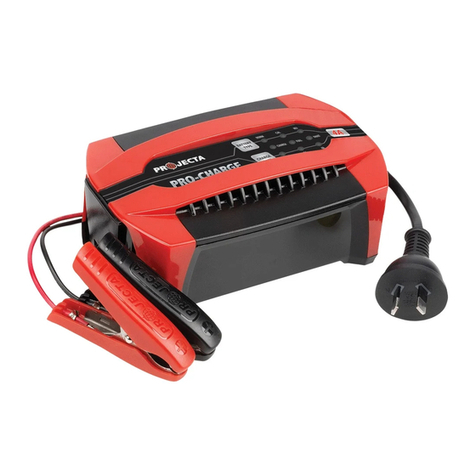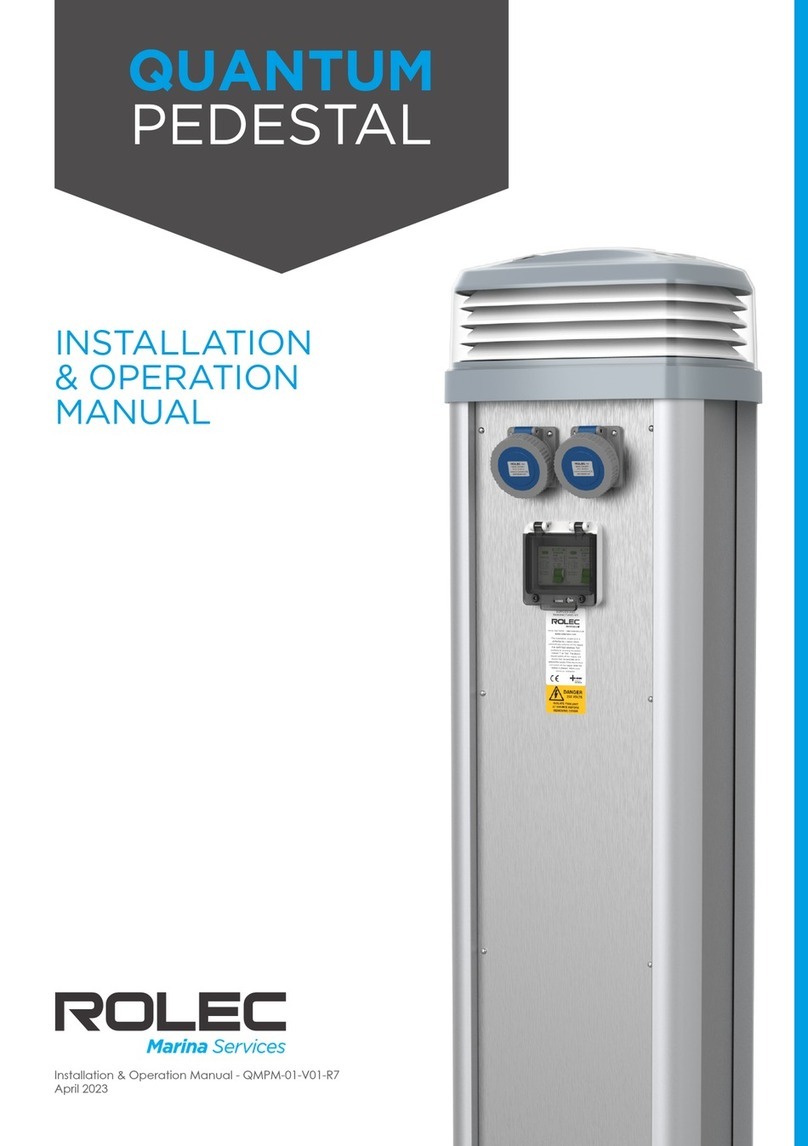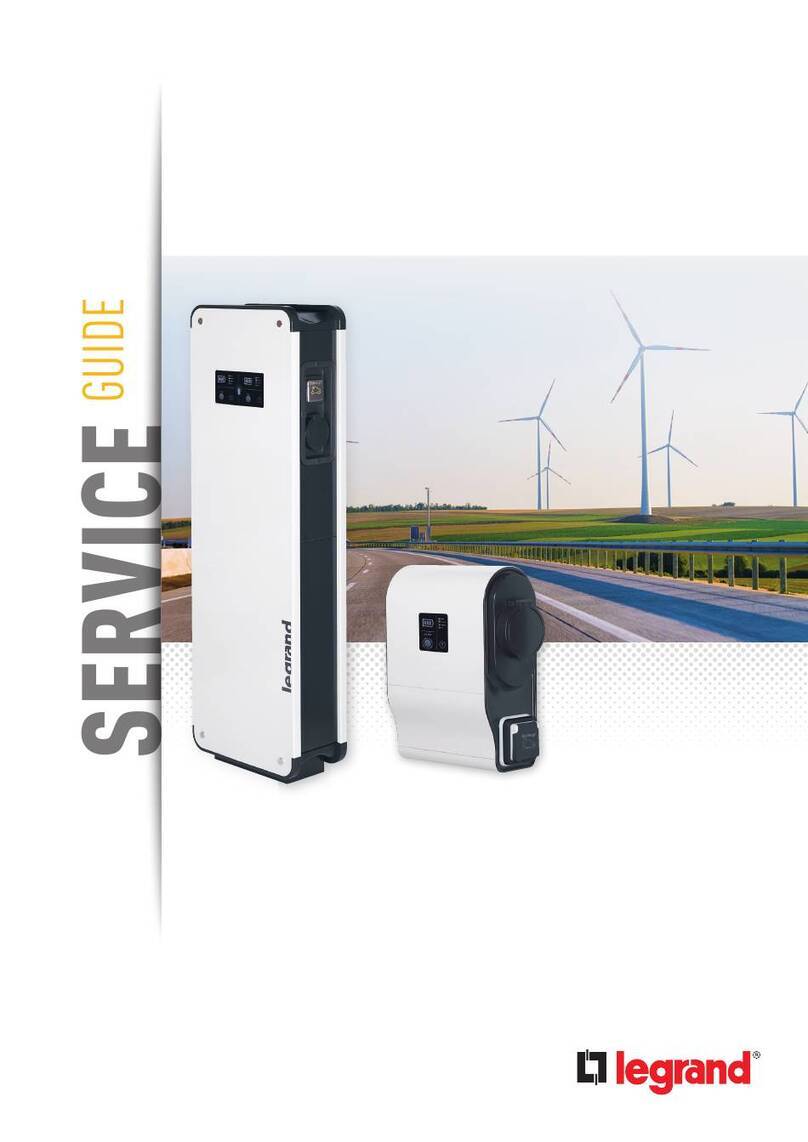Myenergi ZAPPI-2H22UW-G User manual

Rev 1.3 November 2022 – ENGLISH
zappi
eco-smart EV charge point
Installation Manual
MODELS:
ZAPPI
-2H07UW-G
ZAPPI-2H07UB-G
ZAPPI-2H07TW-G
ZAPPI-2H07TB-G
ZAPPI
-2H22UW-G
ZAPPI-2H22TW-G
ZAPPI-2H22UB-G
ZAPPI-2H22TB-G

Page 2of 51
Contents
1. Introduction.................................................................................................................................................................................5
2. Safety Information ....................................................................................................................................................................5
3. Disposal ........................................................................................................................................................................................5
4. Copyright......................................................................................................................................................................................5
5. Overview....................................................................................................................................................................................... 6
5.1 Overview Diagram...........................................................................................................................................................6
6. Box Contents...............................................................................................................................................................................8
7. Connectivity ................................................................................................................................................................................8
7.1 Wireless Connection.......................................................................................................................................................8
7.2 Ethernet or WiFi Connections .....................................................................................................................................8
8. Installation................................................................................................................................................................................... 9
8.1 Mounting............................................................................................................................................................................9
8.2 Wiring................................................................................................................................................................................. 11
8.3 CT Sensor Installation ..................................................................................................................................................17
8.4 Ethernet link .................................................................................................................................................................. 20
8.5 Fitting the Cover ........................................................................................................................................................... 21
8.6 Advanced Installation Options................................................................................................................................. 22
8.7 Built-in Protection ....................................................................................................................................................... 24
9. Set-up......................................................................................................................................................................................... 25
9.1 Installs in England, Scotland & Wales on or after 30th December 2022 .................................................... 25
9.2 Installs in England, Scotland & Wales before 30th December 2022 ............................................................ 29
9.3 Installs outside of Great Britain............................................................................................................................... 32
9.4 WiFi Connection (Retrospective) ............................................................................................................................ 35
9.5 Testing............................................................................................................................................................................. 36
10. Pairing Devices...................................................................................................................................................................37
10.1 Master and Slave Devices...........................................................................................................................................37
10.2 Channels ..........................................................................................................................................................................37
10.3 Pairing zappi ................................................................................................................................................................. 38
10.4 Device Settings............................................................................................................................................................. 38
10.5 Device Priorities ........................................................................................................................................................... 38
10.6 Removing Devices ....................................................................................................................................................... 39
11. Troubleshooting ................................................................................................................................................................ 40
12. Fault Codes .......................................................................................................................................................................... 41
13. Warranty .............................................................................................................................................................................. 42
14. Product Registration ....................................................................................................................................................... 42
15. Technical Specifications................................................................................................................................................. 43

Page 3of 51
15.1 Performance .................................................................................................................................................................. 43
15.2 Electrical Specifications ............................................................................................................................................ 43
15.3 Mechanical Specifications......................................................................................................................................... 43
15.4 Connectivity................................................................................................................................................................... 43
15.5 Max Transmitted Power............................................................................................................................................. 43
16. Model Variants................................................................................................................................................................... 44
17. Technical Support............................................................................................................................................................. 44
Appendix A ........................................................................................................................................................................................ 45
1. Electric Vehicles (Smart Charge Points) Regulations 2021...................................................................................... 45
1.1 Purpose of the Regulations ...................................................................................................................................... 45
1.2 What’s changed with zappi....................................................................................................................................... 45
1.3 Randomised Delay: How it works............................................................................................................................ 45
1.4 Smart Scheduling: How it works.............................................................................................................................. 46
1.5 Defaulting to ‘ECO+’ Mode........................................................................................................................................ 46
1.6 Charging Logs ................................................................................................................................................................47
Appendix B ........................................................................................................................................................................................ 48
2. Electric Vehicles (Smart Charge Points) Regulations 2021...................................................................................... 48
2.1 Purpose of the Regulations ...................................................................................................................................... 48
2.2 What’s changed with zappi....................................................................................................................................... 48
2.3 Automatic Firmware Checking ................................................................................................................................ 49
2.4 Tamper Detection ........................................................................................................................................................ 49
2.5 AES Encryption............................................................................................................................................................. 49
2.6 Installer Requirements............................................................................................................................................... 50

Page 4of 51
NOTICE
The UK Government’s Electric Vehicle (Smart Charge Points) Regulations 2021 have been introduced.
Please ensure you read this manual fully before installing. Processes and features have changed.
Electric Vehicles (Smart Charge Points) Regulations 2021
From 30th June 2022, any EV charger installed in a private setting i.e. home or workplace,
NOT public, in England, Scotland and Wales has to meet the Electric Vehicles (Smart Charge
Points) Regulations 2021.
From 30th December 2022, further regulations come into force.
To ensure all our zappis are compliant by the date the regulations come into force we will
be taking a phased approach with the implementation of certain features.
For information on how these new regulations may affect you and your myenergi zappi
please read the appended information at the back of this manual.
Appendix A – (Electric Vehicle Smart Charge Points) Regulations 2021 – Regulations as of
30th June 2022
This Appendix is relevant to all zappis INSTALLED on or after the 30th June 2022
Appendix B- (Electric Vehicle Smart Charge Points) Regulations 2021 – Regulations as of
30th December 2022.
This appendix is relevant to zappis INSTALLED on or after 30th December 2022.

Page 5of 51
1. Introduction
Thank you for choosing zappi. Of course, we think you have made an excellent choice and are sure you will be
incredibly happy with the features, benefits, and quality of your myenergi product.
These instructions will help you to familiarise yourself with the zappi. By reading the instructions, you will be
sure to get the maximum benefit from your 'eco-smart' device.
2. Safety Information
zappi is an AC EV charger, intended to be installed in a fixed location and permanently connected to the AC
supply network. It is a Class 1 item of electrical equipment in accordance with IEC 61140.
The unit is designed for indoor or outdoor use at a location with restricted access and should be mounted
vertically either surface (wall) mounted or on the dedicated pole mount supplied separately by myenergi.
The device has been manufactured in accordance with the state of the art and the recognised safety standards,
however, incorrect operation or misuse may result in:
•Injury or death to the operator or third parties
•Damage to the device and other property of the operator
•Inefficient operation of the device
All persons involved in commissioning, maintaining, and servicing the device must:
•Be suitably qualified
•Have knowledge of and experience in dealing with electrical installations
•Read and follow these operating instructions carefully
•Always disconnect the device from the supply before removing the cover
The device is not to be used by persons (including children) with reduced physical, sensory, or mental
capabilities, or lack of experience and knowledge, unless they have been given supervision or instruction
concerning use of the device by a person responsible for their safety.
zappi comes in either tethered or untethered variants. The untethered version should only be used with a
dedicated cable fitted with a Type 2 plug which is compliant with EN 62196-1 and EN 62196-2. Adaptors or
conversion adapters and cord extension sets are not allowed to be used.
Failure to install and operate the zappi in accordance with these instructions may damage the unit and
invalidate the manufacturer’s warranty.
3. Disposal
In accordance with European Directive 2002/96/EC on waste electrical and electronic equipment and its
implementation in national law, used electrical devices must be collected separately and recycled in an
environmentally responsible manner. Ensure that you return your used device to your dealer or obtain
information regarding a local, authorised collection and disposal system. Failure to comply with this EU
Directive may result in a negative impact on the environment.
4. Copyright
Copyright of these operating instructions remains with the manufacturer. Text and images correspond to the
technical level at the time of going to press. We reserve the right to make changes. The content of the operating
instructions shall not give rise to any claims on the part of the purchaser. We are grateful for any suggestions
for improvement and notices of errors in the operating instructions.
myenergi zappi, myenergi eddi and myenergi harvi are registered trademarks of myenergi Ltd.

Page 6of 51
5. Overview
Microgeneration systems such as Solar PV and small wind turbines are at their most efficient when the
generated energy is consumed on-site rather than exporting it to the grid. This is what we call 'self-
consumption'.
zappi is a Mode 3 charging station, compatible with all electric vehicles that comply with EN 62196 and EN
61851-1 plug-in electric vehicle standards.
zappi works like any regular charging point but has special ECO charging modes that will benefit homeowners
with grid-tied microgeneration systems e.g. wind or solar generation. Two special ECO charging modes
automatically adjust charging current in response to on-site generation and household power consumption. In
FAST charge mode, zappi operates like an ordinary EV charger.
A grid current sensor (supplied) simply clips around the incoming supply cable and is used to monitor excess
power. When using the special ECO charge modes, zappi will automatically adjust the charge rate in response
to available surplus.
Feature Set
•3 charging modes: ECO, ECO+ & FAST
•Optimises microgeneration self-consumption
•Works with solar PV, wind turbine or micro-hydro systems
•Economy tariff sense input
•Programmable timer function
•Charge and event logging
•Remote control and monitoring add-on option
•Pin-code lock function
•Tap operated display backlight
•Built-in protection against the loss of the protective neutral and earth (PEN) conductor as required by
BS 7671:2018 Amendment 1:2020(The “Wiring Regulations”)
•Ethernet connector (for local communications between myenergi devices)
•Integral cable holster (tethered units)
•Supplied with 1 x clip-on grid current sensor (x3 if purchasing a 3-phase unit)
•Illuminated display – for convenience, the display can be illuminated by simply tapping the zappi front
cover.
•Integrated WiFi for connecting to internet.
•Front Lid Tamper Detection
5.1 Overview Diagram
The diagram on the next page shows the zappi as part of a complete energy management system. Other
myenergi products are shown with details of how they integrate with the grid connection and the
microgeneration system.

Page 7of 51

Page 8of 51
6. Box Contents
Tethered Units
Untethered Units
•1 x
zappi
unit with EV cable and connector attached
•1 x Cable wall guard
•1 or 3 x CT clamps1
•1 x Mounting template
•
1 x Mounting kit for a brick wall
•1 x
zappi
unit
•1 or 3 x CT clamps1
•1 x Mounting template
•1 x Mounting kit for a brick wall
Mounting kit (Tethered units)
Mounting kit (Untethered units)
•4 x 50mm Pozi screws
•4 x Wall mounting plug
•4 x Sealing washer
•4 x 12mm Pozi screws (countersunk)
•4 x 50mm Pozi screws
•4 x Wall mounting plug
•4 x Sealing washer
7. Connectivity
7.1 Wireless Connection
myenergi devices use an 868MHz / 915Mhz wireless link to communicate with each other. Although this is
usually more effective at passing through walls than a standard WiFi signal, radio communication can be
affected by many factors such as:
•the distance between the devices
•the thickness of any walls that the signal has to pass through
•wall construction and insulation materials
•large metal objects such as washing machines, fridges, sinks and baths
•mirrors
•electronic products such as televisions
•other wireless devices operating on the same radio frequency
Please consider the position of your myenergi devices carefully to ensure that they operate as planned.
Although the devices work in the majority of installations and our technical support team are available to
provide help in setting up your system, we cannot guarantee the performance where circumstances beyond
our control affect the performance of the wireless link.
If you have any concerns about the wireless performance then we would be pleased to answer your questions,
but please consider that if a WiFi signal works OK then there is a very high probability that the myenergi
devices will also work without any issues.
7.2 Ethernet or WiFi Connections
zappis with the built-in vHub (identified by product code zappi-2Hxxxx and 22xxxx) are supplied with a built-
in Ethernet port (RJ45) and WiFi to connect zappi to the local network (LAN).
All myenergi internet capable devices should be connected to the internet either, via WiFi or a hardwired
Ethernet connection. This version of the zappi can also act as the “hub” between all your myenergi devices
and the myenergi server. The “hub” device MUST be connected to the internet.
harvi can only be connected using a wireless link to the Master device
NOTICE
It is not currently G100 compliant to use a
harvi
with
zappi
or
libbi
to measure Grid CT, in UK installations.
•
EV chargers and battery storage must have a hardwired Grid CT (in the UK).
When pairing devices, they will use the Ethernet link over wireless, if available.
11xCT clamp supplied with single phase zappi; 3xCT clamps supplied with three phase zappi

Page 9of 51
8. Installation
8.1 Mounting
NOTICE
•Care should be taken to maintain the IP rating of the unit.
•Ensure grommets and bungs provided are fitted, the O-ring behind the cover is seated correctly and
that the incoming power and CT cables are fitted using an appropriate size and type of gland.
•
zappi must be fixed to a flat vertical surface.
8.1.1 Cable and Gland Requirements
The Cross Sectional Area of the cable used should be between 4mm2and 10mm2The gland diameter should
be a minimum of 16mm and a maximum of 25mm. Generally, a stuffing gland can be used. SWA CW outdoor
glands may be used for armoured cable. The size of cable and gland used is the responsibility of the installer
and should be determined on an install-by-install basis dependant upon install specifics.
8.1.2 Mounting Instructions
Step 1:
Carefully remove fascia from the zappi by
pressing the 2 clips located at the bottom of unit
inwards whilst pulling the fascia towards you.
Step 2:
If installing a tethered zappi, you must
ensure the cable wall guard is fixed to the unit using
the 4 screws supplied.
If installing an untethered zappi go to next step.

Page 10 of 51
Step 3:
Remove all 8 screws from the enclosure
and carefully lift away.
Step 4:
There are 4 possible cable entry positions,
carefully decide which one you are going to use from
the above image.
You will need an IP65 or above rated cable gland.
Carefully drill a hole into the unit to match the size
of your cable gland. Attach cable gland ensuring IP
rating is met.
Step 5:
Using zappi
template mark mounting
holes. For fixing to brick, use the top and 2 bottom
holes (left/right). Use the 2 vertical holes as well as
the top hole if mounting to a stud wall or joist.
Step 6:
To maintain the IP rating of the unit you
will need to add bungs (provided) to the unused
holes.

Page 11 of 51
Step 7:
Secure the unit to the wall using the fixing
kit provided. Ensure the grommets are used to
maintain its IP integrity.
Step 8:
Ensure O-ring is present and sits neatly
into its channel.
NOTICE
If using the rear cable entry, remember to insert the mains cable before mounting to the wall.
8.2 Wiring
WARNING
ELECTRIC SHOCK – An electric shock can be fatal; electrical connection work may only be carried out by a
competent person. The earth conductor must be correctly installed and reliably connected. This device must
b equipped with an over-current protection device of maximum 32 Amps (B32).
8.2.1 Cable and Gland Requirements
The Cross Sectional Area of the cable used should be between 4mm2and 10mm2. The gland size should be a
minimum of 16mm and a maximum of 25mm. Generally, a stuffing gland can be used. SWA CW outdoor glands
may be used for armoured cable. The size of cable and gland used is the responsibility of the installer and
should be determined on an install-by-install basis dependant upon install specifics.
8.2.2 Strip Length
The main terminals are designed to work with wires with a diameter up to 16mm2.
Insert the mains cable through the installed cable gland (if not already done so). Strip
back outer sheath ensuring all cables reach the terminal blocks (leaving a little excess).
Strip back all coloured cables approx. 18mm.
If using hard wired CT clamps now is the time to insert these too (we recommend a specialist cable gland that
can accommodate multiple cables whilst still maintaining IP integrity, or two separate cable glands to ensure
zappi remains sealed).

Page 12 of 51
To insert the wires into the terminal blocks a suitable sized screwdriver should be inserted into the slot. This
opens the spring terminal allowing the wire to be gently pushed into the terminal. Make sure that the wire is
pushed fully home and then remove screwdriver, checking that the wire is secure in the terminal.
8.2.1 Supply
The single phase zappi should be connected to a 230V/240V nominal AC supply. The supply should run from
a dedicated 32A circuit breaker.
The 3 phase zappi should be connected to a 400V, 4 wire, 3 phase supply. The supply should run from a
dedicated 3 pole 32A circuit breaker.
We recommend the use of curve B circuit breakers.
Local wiring regulations should consulted to confirm whether an additional upstream RCD is also required.
8.2.2 Earthing
The zappi unit must be earthed in accordance with local regulations.
When installed on a PME (TNC-S) electrical system it is necessary to protect the consumer from a potential
electric shock that could occur if the combined Neutral and Earth (PEN) conductor on the supply becomes
damaged or disconnected.
zappi includes an additional automatic disconnection device which satisfies the requirements of BS7671:2018
Amendment 1:2020 722.411.4.1 (v) (the 18th Edition IET Wiring Regulations).
This protection device
a) monitors the supply to identify if there is a problem with the PEN conductor and
b) disconnects the supply if a situation arises where the end user might suffer an electric shock
This means that the zappi can be installed without the need for an additional earth rod.
However, if the customer or local regulations require that an earth rod is installed (for instance as part of a TT
earthed system) then this should be connected to the dedicated terminal on the main circuit board using a ring
terminal (as shown below).

Page 13 of 51
8.2.3 Single Phase Wiring
For single-phase installations, without the
need for hardwiring an external CT, please
follow the above diagram
Earth = Green / Yellow cable
Neutral = Blue cable
Live (L1) = Brown cable
For single phase installations, where 1 or more
external/additional CTs are required, please
follow the above diagram to connect the CTs.
Use the extra CT terminals in the same way if
required.
Positive (+) = Red
Negative (-) = Black
For more details on CT installation and
connection see CT Sensor Installation
WARNING
It is vitally important that conductors are inserted
into the correct terminal entry.
If in doubt please call our Technical Support Team
for guidance before installing.

Page 14 of 51
8.2.4 Three Phase Wiring
For 3 phase installations, without the need for
hardwiring an external CT, please use the
above diagram.
Earth = Green / Yellow cable
Neutral = Blue cable
Live (L1) = Brown
Live (L2) = Black
Live (L3) = Grey
For 3 phase installations, with the need for 1 or
more external/additional CTs, please use the
above diagram.
Positive (+) = Red
Negative (-) = Black
For more details on CT installation and
connection see CT Sensor Installation
WARNING
It is vitally important that conductors are inserted
into the correct terminal entry.
If in doubt please call our Technical Support Team
for guidance before installing.

Page 15 of 51
8.2.5 eSense Input
zappi has an “external Sense” or “eSense” input which can be used with an external input (such as a relay
contact or voltage) to
•sense the availability of economy tariff electricity, this can be used to automatically boost the charge when
in ECO or ECO+ charging modes.
•force zappi to limit the output or stop the EV charging
NOTICE
The connection to the eSense input will depend on the version of the
zappi
.
•Serial numbers starting 1xxxxxx
The eSense input to the zappi is designed to work with an AC voltage between 100V and 260V.
•Serial numbers from 2xxxxxxx onwards
A “universal” Sense input is provided. This will work with an external voltage 24-230V AC/DC wired to the
terminals marked “24-230V AC/DC in”.
To use eSense input with a simple “dry” relay contact, a 24V DC supply is provided. The external volt-free
relay contact should be wired between the terminals marked “24V out” and “in”.
The eSense input is electrically isolated and effectively draws no current so the eSense signal may be
connected using a wire with a small cross section. When the eSense input is active the cause the eSense symbol
will be shown on the main screen. There is no need to connect the eSense input if you do not want to use
this feature.
If the eSense input is provided using an
external volt-free contact then this must be
connected to the outer terminals marked
“24V out” and “in”
If the eSense signal is provided by using an
external voltage this must be connected to the
two right hand terminals marked “24-230V
AC/DC in”
NOTICE
There is no need to earth the eSense cable
8.2.6 Wiring Overview Diagram
The diagram on the following page gives an overview of the wiring required for a standard installation.

Page 16 of 51

Page 17 of 51
8.3 CT Sensor Installation
Current Transformers (CTs) are used to measure current at various places of the installation. For example, the
Grid connection point, the solar/wind inverter, or a static battery system.
Installation of a CT to monitor the Grid connection point is required for ECO modes. Other CTs are optional and
can be purchased separately. The number and location of CTs used within an installation will vary according to
the devices installed and the user requirements.
CTs can be wired to any myenergi device with CT inputs (e.g. eddi, zappi or harvi). This allows for flexible
installation as a CT can be wired to the nearest device. Ideally the grid CTs should be wired to the master
device.
NOTICE
The harvi device can be used (wirelessly) if it is not practical to connect Generation CT to the zappi.
NOTICE
It is not currently G100 compliant to use a
harvi
with
zappi
or
libbi
to measure Grid CT, in UK installations.
•EV chargers and battery storage must have a hardwired Grid CT (in the UK).
SINGLE PHASE: A CT clamp must be placed
around the live meter tail as shown above with
the arrow pointing towards the consumer unit.
NOTICE
The clamp can be placed on the neutral tail,
however the direction of the arrow shown above
will need to be in reversed.
3-PHASE: A CT clamp must be placed around
each phase with the arrow pointing towards the
consumer unit.
NOTICE
A CT cannot be clipped on to the neutral in a 3-
phase system.

Page 18 of 51
Once installed the CTs need to be configured. See CT Config for details of how to configure the CTs.
If using a single-phase system, the wired CT sensor (supplied) ideally needs to be clipped around the live
conductor leaving the meter tail with the arrow (located on the side of the CT) pointing towards the consumer
unit. It is possible to use the Neutral conductor, however you will need to reverse the direction of the sensor
(arrow towards the meter).
If using a 3-phase system, a CT sensor (supplied) needs to be clipped around each live tail.
The positioning of the Grid CT sensor is crucial, please take note of the following when deciding where best to
install the sensor:
•The sensor can be connected to any myenergi device with a CT input e.g. the eddi, zappi (wired sensor)
or harvi (wireless sensor)
•ALL the import and exported power must be 'seen' by the sensor. Ensure that it is installed before ANY
junction box or 'Henley Block' (if necessary, the CT can be fitted inside the consumer unit)
•There must be only one Grid CT per-phase for the whole installation. (There can be other CTs but only one
at the grid connection point. Also note that CTs for third-party devices do not matter)
•The CTs can be clipped on either the Live or Neutral cable on single-phase systems
Note: On 3 phase system you can only use the Live tails
•The arrow on the bottom of the CT sensor must be pointing towards the consumer unit (in the direction of
grid import) if on the Live cable or reversed if on the Neutral cable (single phase only)
•Ensure the CT is fully closed and clicks shut
•Be sure to wire the CT the correct way round: black [–], red [+]. Failure to do so will see the import and
export readings swapped
8.3.1 Grid CT
The Grid CT sensor (supplied) needs to be clipped around either the Live or Neutral meter tail of the electricity
supply meter. If using the Neutral conductor, reverse the direction of the sensor (so the arrow is reversed).
The positioning of the Grid CT sensor is crucial, take note of the following when deciding where best to install
the sensor:
•Can be connected to any myenergi device with a CT
input e.g. the eddi or zappi (wired sensor) or harvi
(wireless sensor).
•ALL of the imported and exported power must be 'seen'
by the sensor – be sure to install it upstream of ANY
junction box or 'Henley Block' (the CT can be fitted inside
the consumer unit).
•There must be only one Grid CT per-phase for the whole
installation. (There can be other CTs but only one at the
grid connection point, also note CTs for third-party
devices do not matter).
•The CT should be on the Live or Neutral cable.
•The arrow on the bottom of the CT sensor must be
pointing towards the consumer unit (in the direction of
grid import) if on the Live cable, or reversed if on the
Neutral cable.
•Ensure the CT is fully closed and clicks shut.
•Be sure to wire the CT the correct way round; black[–],
red [+] otherwise import and export readings will be
swapped.

Page 19 of 51
8.3.2 Additional CTs
There is an option to add other CT sensors (available separately) for monitoring the generation or other
appliances such as battery systems or general loads. Installing a CT for the generator (PV system) will allow
the main screen to show the generated power and the total power consumption of the all the other appliances
in the property.
CTs can also be used to limit the power drawn from the supply:
•Additional CTs can be connected to any myenergi device with a CT input that is linked to the network.
•The arrow on the bottom of the sensor must be pointing in the direction of normal power flow (e.g.
away from the PV inverter) if on the Live cable or reversed if on the Neutral cable.
•Ensure the sensor is fully closed and clicks shut.
•Be sure to wire the CT the correct way round; black [–], red [+]
8.3.3 Extending CT Sensor Cable
If there is a need to extend the CT sensor cable, twisted-pair cable like CAT5 or telephone cable must be used
(only use one pair).
8.3.4 Wireless CT Sensor (Optional accessory)
In some cases it can be difficult or impractical to install a wired sensor. For example, it may be the case that
the zappi unit needs to be connected to a sub-board, rather than main consumer unit and two consumer units
are in different buildings.
The solution is to install harvi – a clever little device that enables the zappi product to be installed without
using wired CT sensors for measuring generation power; instead the CT sensor is connected to harvi.
The harvi does not need batteries or a power supply – the energy from the sensor is harvested and used to
transmit the measurement signal to the eddi. This means batteries or electrical wiring are eliminated!
Up to 3 CT sensors may be used with harvi and it also supports 3-phase systems if three sensors are connected.
Refer to the harvi installation guide for details on installing and configuring harvi for your system.
NOTICE
It is not currently G100 compliant to use a
harvi
with
zappi
or
libbi
to measure Grid CT, in UK installations.
•EV chargers and battery storage must have a hardwired Grid CT (in the UK).
NOTICE
DO NOT use mains cable, bell wire or speaker
cable. It is important to use only twisted-pair
cable to maintain signal integrity. The cable can
be extended up to 100m.

Page 20 of 51
8.3.5 CT Golden Rules – Grid CT
•Only ONE Grid CT per phase (check for only one ~ symbol in Linked Devices Info).
•Located to ‘see’ ALL import and ALL export current (i.e. always upstream of any junction box).
•Arrow pointing in direction of import (e.g. towards consumer unit if on Live cable).
•Must be on the same phase as the Master myenergi device.
8.3.6 All other CTs
•Arrow should point towards the consumer unit.
8.3.7 3-phase harvi CTs
•When using harvi in 3-phase mode, the CT inputs correspond to the phase number (e.g. CT1 =
Phase 1). This helps to avoid phase shifting / phase misalignment.
8.3.8 CT Can do’s
•Can be wired to ANY myenergi device in the network.
•harvi can be used to make ANY CT wireless2.
•Cable can be extended up to 100m (must use twisted-pair cable e.g. one pair of CAT5).
•Cable can be shortened.
•Can be clipped around two or more conductors feeding appliances of the same type (e.g. two Live
cables from two inverters that are on the same phase).
•Can be in close proximity to other CTs.
•Wires can be swapped around in device to reverse the direction of the readings (e.g. change import to
export).
•Can be grouped with other CTs of the same type so that the power reading is summed (e.g. east and
west solar Generation).
•Can be used on the Neutral conductor (direction of arrow or wires must be reversed).
•Can be set to None if you want to exclude the reading.
8.4 Ethernet link
If you are installing a hard wired link to the router, insert the Ethernet cable into the RJ45 Port before
progressing to 8.5
Ensure you connect the remaining end of the Ethernet into the home router.
2Although CT’s connected to a harvi cannot be used with Monitor Group option.
NOTICE
If installing alongside a
libbi
or another
zappi
, all devices MUST be paired using hardwired Ethernet.
This is to ensure the installation remains G100 compliant.
This manual suits for next models
8
Table of contents
Other Myenergi Automobile Batteries Charger manuals
Popular Automobile Batteries Charger manuals by other brands
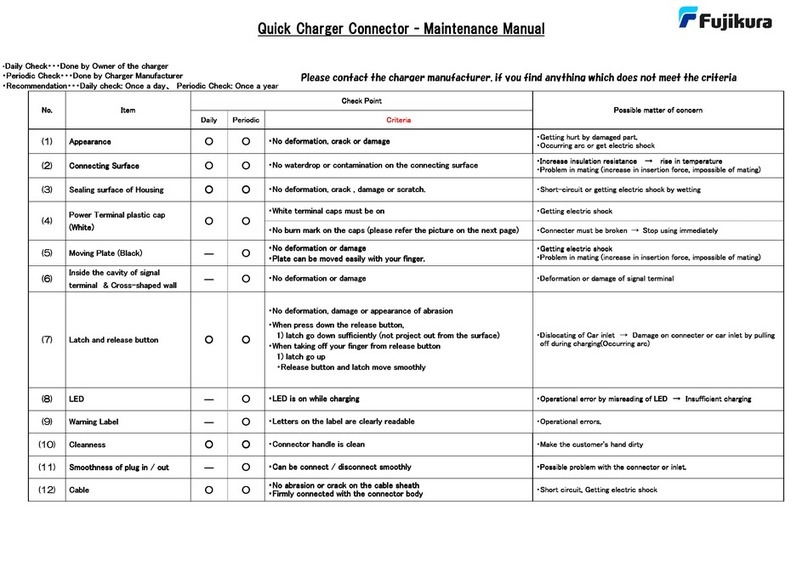
Fujikura
Fujikura Quick Charger Connector Maintenance manual

Charge Amps
Charge Amps Ray user manual
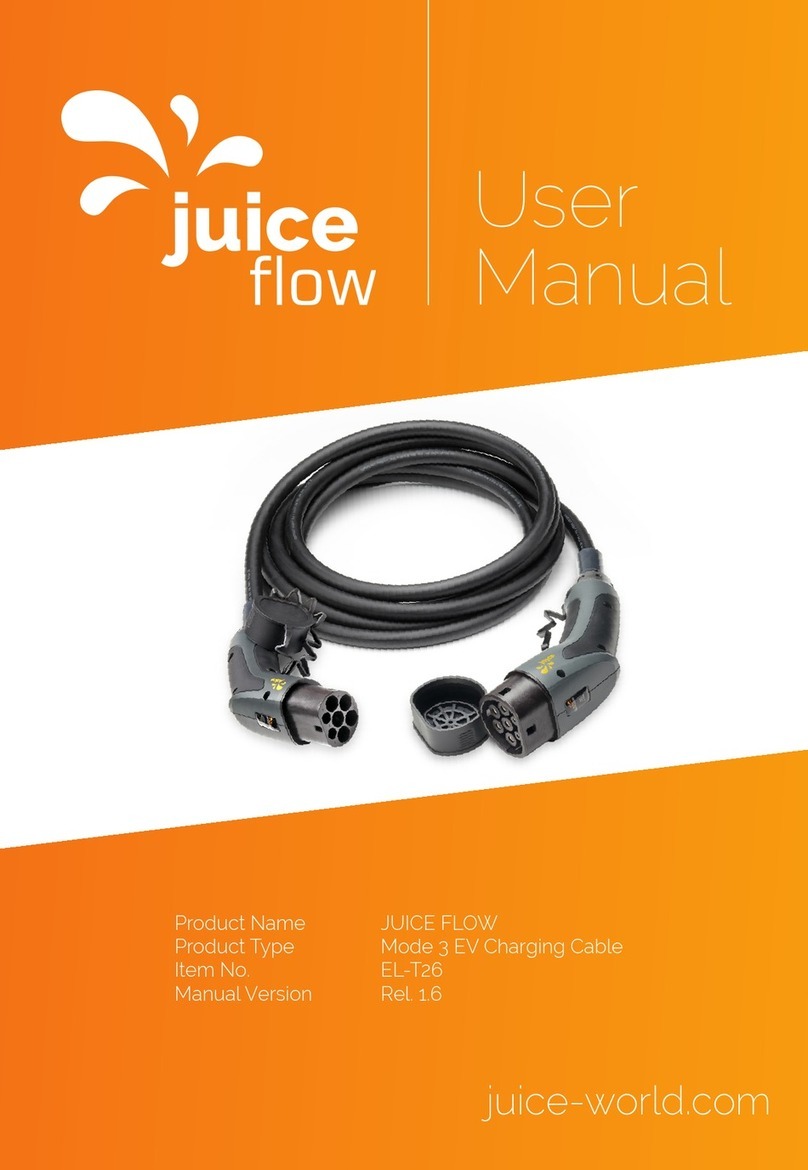
Juice Technology
Juice Technology JUICE FLOW user manual
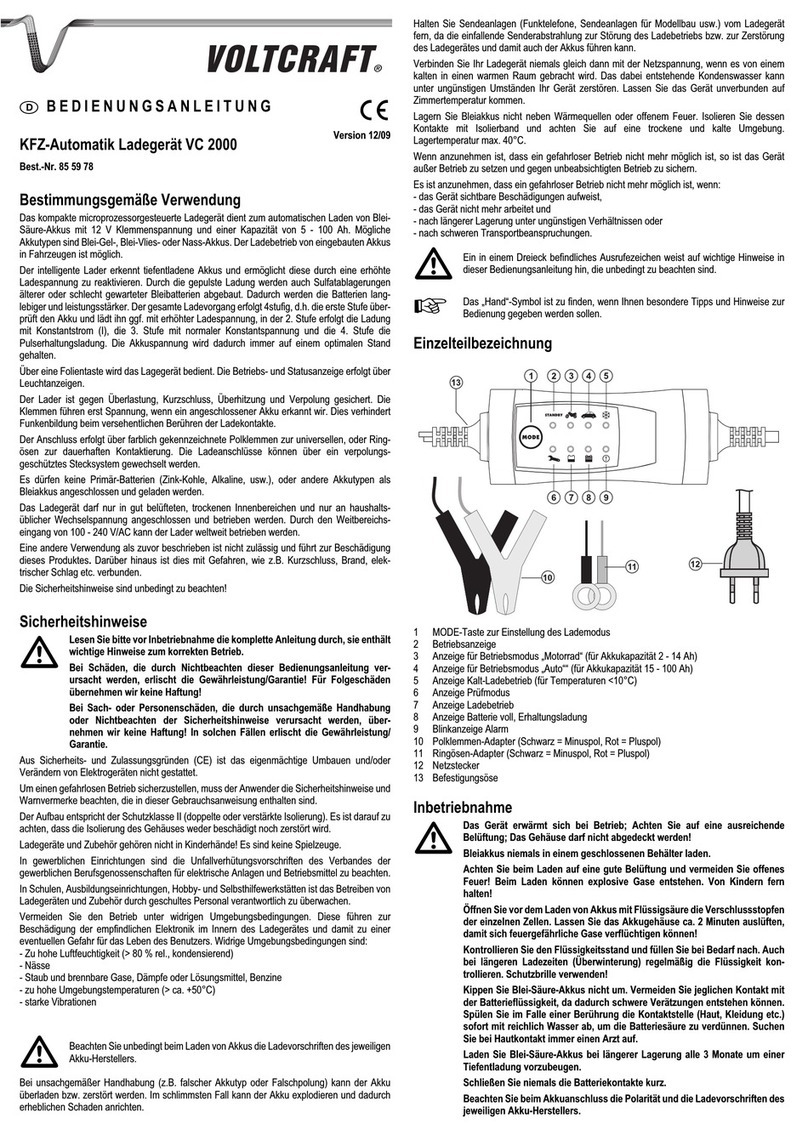
VOLTCRAFT
VOLTCRAFT VC2000 operating instructions
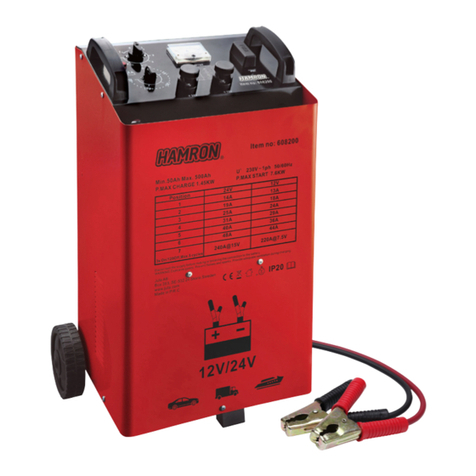
Hamron
Hamron 608-200 User instructions

Alpitronic
Alpitronic Hypercharger HYC 50 Operation and installation guide

Schumacher
Schumacher SI-200A owner's manual

POD Point
POD Point Solo 3 Wi-fi connection guide
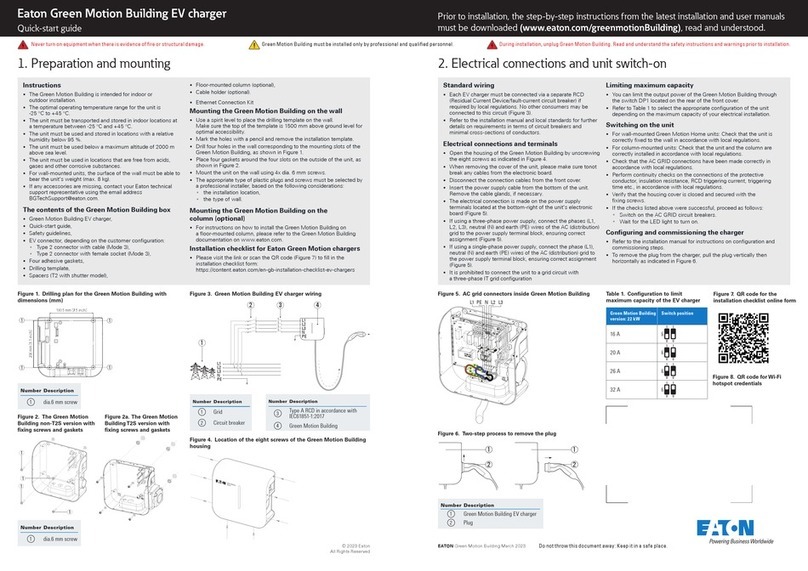
Eaton
Eaton Green Motion Building quick start guide
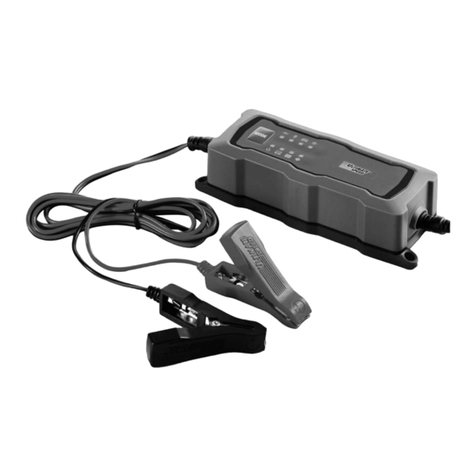
ULTIMATE SPEED
ULTIMATE SPEED ULG 3.8 B1 operating instructions
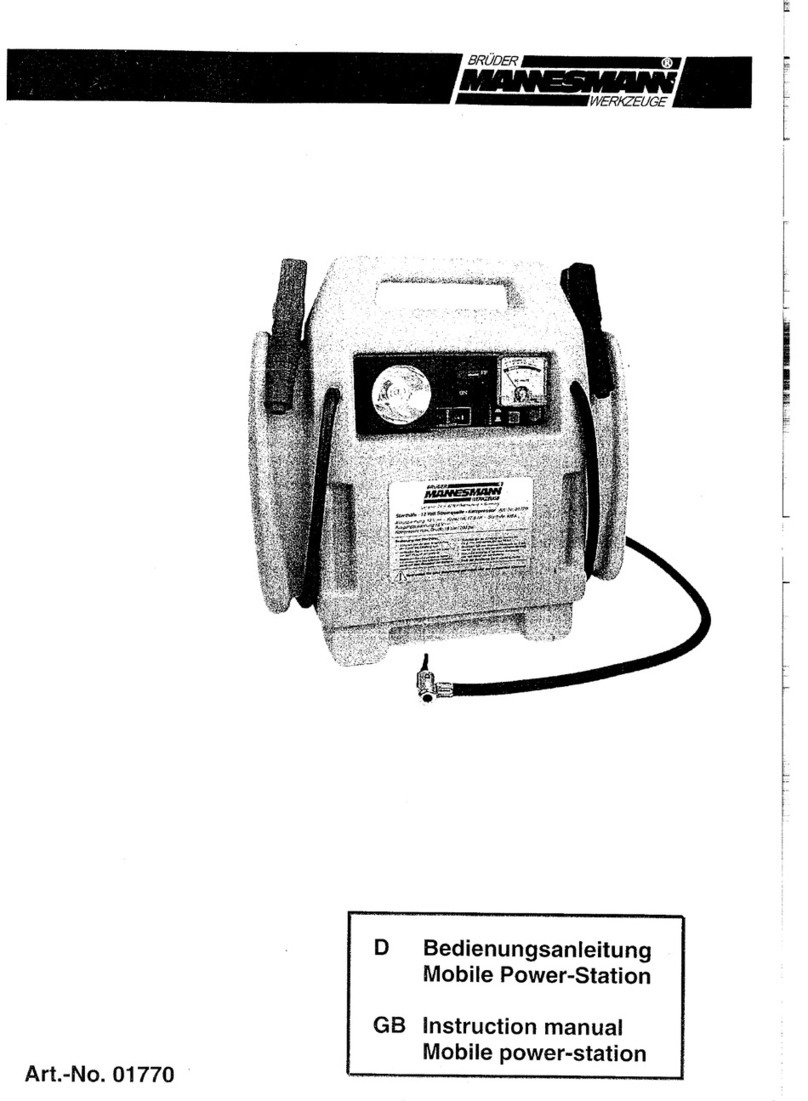
Mannesmann
Mannesmann Jump Start/Air Compressor instruction manual
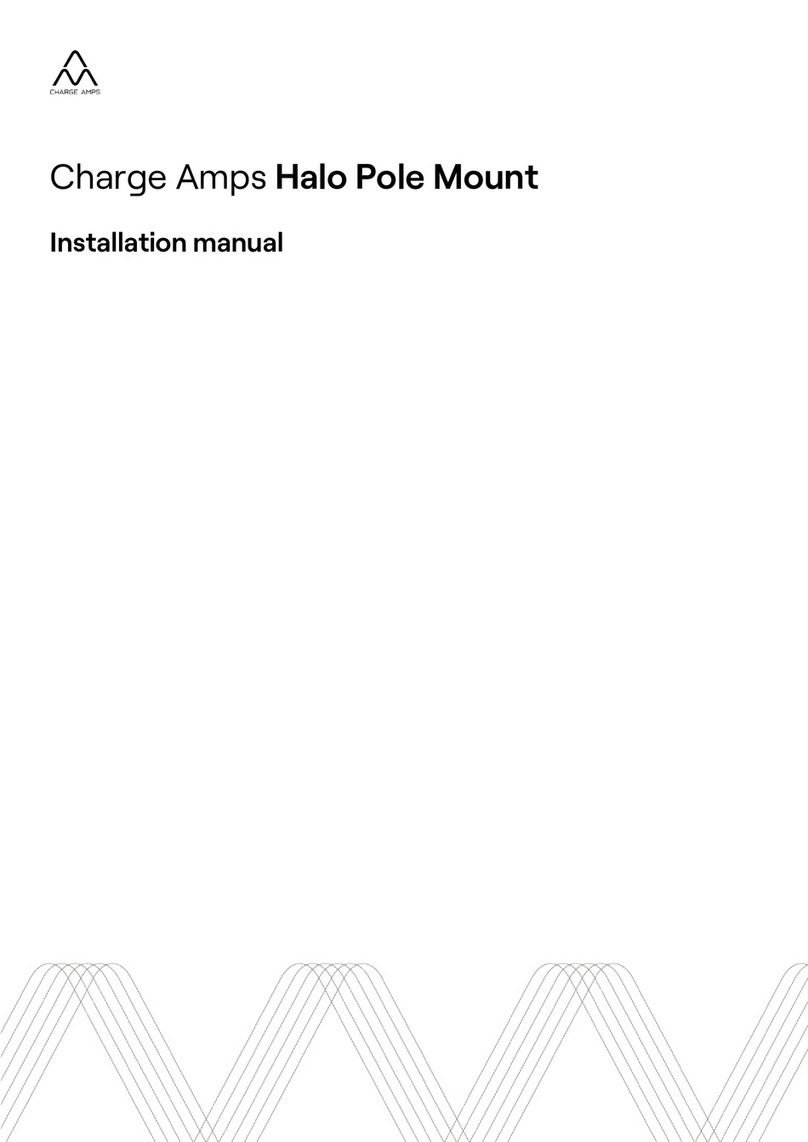
Charge Amps
Charge Amps Halo Pole Mount installation manual
